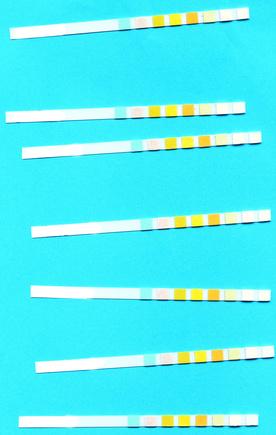Predicting ovulation is crucial when you are trying to get pregnant. One way to predict this is to detect the sudden surge in luteinizing hormone (LH) by using an ovulation kit. The LH surge typically indicates that ovulation will occur within 24 to 48 hours. When used correctly, the kit can give you a fairly good idea of when to time intercourse to maximize your success in conceiving.
Step 1
Determine the average length of your menstrual cycle. Cycle day one (CD 1) is the day of your period begins. The last day of your cycle is the day before the next period begins. Since not all women have a standard 28-day cycle, it is important information to help determine your window of ovulation.
Step 2
Purchase an ovulation kit. Typically, ovulation kits come with about seven test sticks and recommend that you use them between CD 11 and CD 16. This assumes, however, a typical 28-day cycle with ovulation around day 14. According to Toni Weschler, author of “Taking Charge of Your Fertility,” ovulation occurs about 14 days before your period, not after it. So, if you have a 35-day cycle, it is possible you may not ovulate until CD 21, meaning you will need to purchase multiple kits.
Step 3
Avoid testing before noon, even if the ovulation kit suggests using first morning urine. There are two reasons for this delay. Morning urine is more concentrated, which is more likely to provide a false positive results, and LH (which triggers ovulation) is synthesized in the morning, making it much more likely to show up in afternoon urine. The American Pregnancy Association (APA) also suggests reducing the amount of liquid you drink for about four hours before testing.
Step 4
Unwrap an ovulation stick/strip right before use. Locate the absorbent tip and hold it in your urine stream for five to 10 seconds. Alternatively, you can urinate in a small, clean cup and dip the tip in the cup.
Step 5
Read the strip by looking at the control line and the test line. Unlike a pregnancy test, the test is only positive if the test line is as dark as or darker than the control line. If you are unsure, test again a few hours later to confirm. Your LH surge can last as few as 10 hours, so it is important to catch it while you can.
Step 6
Test daily until the ovulation predictor kit is positive. Most women ovulate within 48 hours of a positive result, so to maximize your chances the APA recommends having intercourse three days after a positive test.
Warnings
- A positive ovulation test does not guarantee you will ovulate. Many women can have false LH surges; some also surge without releasing an egg.
Photo Credit
- bandelette test image by YvesBonnet from Fotolia.com





